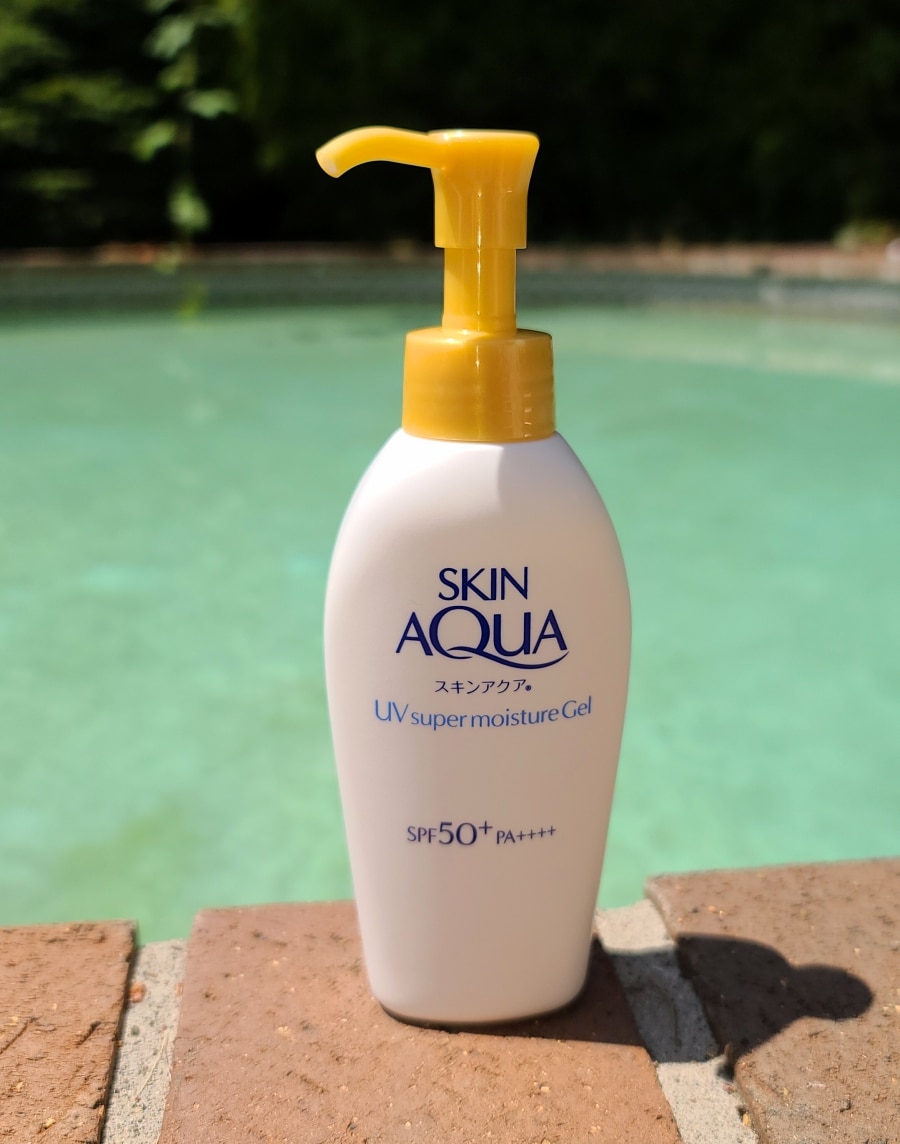You’ll need to do some detective work to determine why your sunscreen is pilling up or appearing greasy on the skin. Are you letting your previous products fully absorb before applying SPF? Or are you perhaps trying to add sunscreen on top of a heavy cream product? If neither of these applies then you may want to check out the expiration date on the bottle. Expired sunscreen can turn grainy, watery, or even change color! Sunscreens can also degrade if stored in a hot place like your car door or in the sun by the pool. If you believe your sunscreen has gone bad due to heat exposure or it’s expired, it’s time to chuck it in the garbage and get a new bottle!
How to Stop Sunscreen from Pilling
- Wait 5 minutes after applying skincare before adding SPF on top
- Avoid layering SPF over heavy creams or oil-based products
- Check the expiration date
- Don’t mix silicone and water-based formulas
- Avoid formulas using dimethicone and homosalate
Having your SPF pill up into balls on the skin is such an immensely annoying experience that I’ve actually written an entire article dedicated to why this happens and how to stop skincare products from pilling up.
There are also a few common sunscreen ingredients that don’t play well with others and frequently lead to pilling. If a sunscreen formula has a high concentration of silicone ingredients such as dimethicone it can lead to a heavy feel on the skin and even pilling. Homosalate is another common chemical filter used in sunscreen that can cause pilling and oiliness:
Homosalate “is a relatively weak UV filter and, especially at the higher concentrations frequently used, thick and oily. It is frequently included in sunscreen formulations to help dissolve and stabilize avobenzone.
Craig A. Kraffert, MD
This article contains affiliate links; if you purchase a product through my link it may send a small portion of the purchase my way.
Can You Layer Sunscreen over Moisturizer? Here’s How to Do It!
If you’re asking this to yourself, you’ve likely experienced the nightmare of having your face turn into an oil slick after trying to apply SPF after your normal moisturizer. Sunscreen can be carefully layered over a base of light moisturizer but dermatologists advise it cannot be effectively used over thick creams:
“Generally speaking, the ingredients in a chemical blocker need to be adsorbed into the skin so that they can do their job, You do not want to apply anything that will interfere with their penetration”
Dr. Joshua Zeichner, Associate Professor of Dermatology at Mount Sinai Hospital NYC, tells Allure. “
When layering SPF over your skincare routine it’s important to use a light formula that will completely absorb into the skin without leaving a film on the skin. Rich moisturizer creams are a godsend for dry skin but they will stop your SPF in its tracks! Chemical SPFs adsorb into the skin but they also form a thin film on the top of the skin. Mineral SPFs also absorb into the skin but mainly sit on the surface creating a protective barrier. If you try to apply sunscreen over an occlusive product (like your favorite cream) it will stop it from properly absorbing and also dilute the SPF when you rub it into the skin which will also prevent an effective barrier from being formed. When sunscreens are tested for SPF ratings it’s done on clean and dry skin, they don’t take other factors into account such as applying the sunscreen over makeup or other skincare products.
Before applying SPF, double-check that your previous products have fully absorbed into the skin. I recommend using a water-based moisturizer and save your creamier products for your PM skincare routine. Also, skip any oil-based serums or cleansers as these can leave a greasy film that can prevent the sunscreen from forming an effective barrier.
I cleanse, apply serum, apply moisturizer and then take a 5-minute break to make coffee every morning. I’ll then go back to add a layer of SPF after everything has had a chance to fully soak into my skin!
How to Stop Sunscreen from Looking Greasy
Ending up with greasy skin after applying sunscreen can be very discouraging and you may almost want to skip the SPF entirely, but don’t give up quite yet!
- Skip moisturizer and go straight to applying your SPF!
- Set your sunscreen with an SPF powder
- Avoid waterproof formulas and anything labeled as sport or marketed for beachwear.
- Use a lotion sunscreen and avoid spray and stick SPFs
You can completely avoid most greasy outcomes by going straight to applying SPF after cleansing and drying your skin. This may seem strange, but the vast majority of sunscreens actually also include multiple hydrating ingredients that take the role of a moisturizer. If you’re experiencing greasy skin after layering SPF over your everyday moisturizer it could be a sign that your skin is actually too moisturized!
If you have very dry skin you can alternatively use a moisturizer with built-in SPF to ensure your skin is adequately hydrated. The CeraVe Hydrating 100% Mineral Sunscreen SPF 30 is a great option if you need to multitask by treating dry skin and protecting from sun damage with one product.
You can also set your sunscreen with a powder SPF for an added boost of protection! You can learn more about my favorite brands from when I tested 5 different SPF powders here. Powder sunscreens do not typically provide enough protection when used alone but they’re a great tool to help mattify a greasy sunscreen and will also bump up your SPF coverage.
One last word of caution to those with oily skin, resist using blotting sheets when wearing sunscreen!
Many chemical filters used in sunscreen are oil soluble and will be transferred along with any facial oils onto your blotting paper. As you can see from the photos below that were taken with a UV camera (darker = more protection, lighter areas = less protection) the blotting papers removed a substantial amount of product which can leave your skin vulnerable to sun damage.
How to Find a Non-Greasy Sunscreen
If you aren’t going to be swimming or vigorously exercising, avoid SPFs labeled as “Sport” or waterproof formulas. Water-resistant sunscreens frequently use a thicker formula that is made to stick to the skin and not easily transfer during exercise which results in a greasier look. Choose a liquid SPF and avoid stick sunscreens (stick SPFs frequently include greasy ingredients like beeswax and oils to keep the stick in a solid-state).

If you require a water-resistant sunscreen but also need to avoid looking like an oil slick stick to lotion SPFs and skip the spray and stick forms of sunscreen. Spray SPFs stray closer to the oily side as they are formulated to easily cling to the skin in a thick protective layer which is great for stopping sun damage but not for keeping a matte look to the skin. I highly recommend the Rohto SKIN AQUA UV Super Moisture Gel, it’s water-resistant, is SPF 50, and absorbs very quickly with zero white caste or greasiness. I’ve gone through quite a few bottles of this sunscreen and plan on buying many more!
Recent Posts
There are two new sunscreens on the block and the lovely folks over at Kinfield gifted some tubes for me to to test out so I can share a skincare deep dive with y'all! This post contains affiliate...
Trying to find a sunscreen formulated without glycerin is no easy task! I've researched hundreds of sunscreen formulas while writing for this blog and it's shocking how extremely few glycerin-free...
